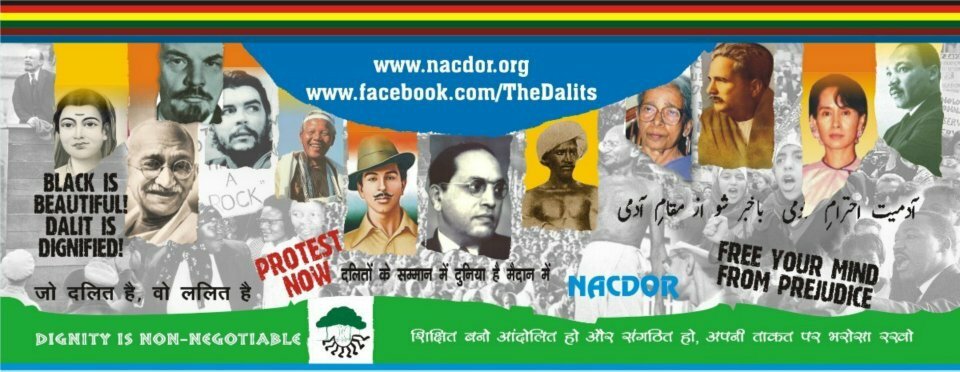Forms of Discrimination
Injustice and inequality in India exist in the worst form by way of social stratification and hierarchy that are directly linked to religion and caste. An analysis of intersecting ways in which institutions and practices built upon caste system reproduced norms and beliefs about the social inferiority (and consequent economic and political inferiority of certain castes) and thus also explain how social and economic privileges are distributed, who gains and who is excluded. We identify the following forms of discrimination:
Caste-Intensified Discrimination
Caste-specific discrimination refers to specific form of discrimination based on cultural norms, beliefs, practices and customs deriving its legitimacy from the principles of caste system and religion. Thus, graded inequality embedded in the caste system dictates that certain occupations like performing pooja, teaching-learning and agriculture are considered pure and superior and upper castes only have the `rightful' right to perform, while occupations like scavenging, sweeping, shoemaking, haircutting are impure and polluting and are performed by lower castes. Further, this understanding of purity and pollution also throws up the practice of untouchability, physical/social distance/segregation, private/public life, language demeaning to intrinsic human value.
Caste-Imposed Discrimination
Caste-imposed discrimination refers to the fact that caste inequality has been socially constructed through age-old norms, customs and practices to protect social, political and economic interests. This has given more power to some social groups. These groups try to dictate and are successful to an extent in imposing their own world-view, their own norms, beliefs and cultural practices on other depressed social groups. This leaves little chance of multi-cultural community to co-exist peacefully and democratically.
Self-Imposed Caste Discrimination
The last category refers to the fact that caste inequality, practice of untouchability etc. may have been socially constructed but the members of the lower castes have internalized it and consider this position divinely given in the human order. This makes them willingly submit to the dictates of upper caste whims and fancies.
Thus, the combinations of forms of discrimination discussed above help to socially construct and get accepted a particular nature of formal and informal social, political and economic institutions which favour certain social group over others. This results in some social groups to command and control public goods, get hierarchies of power and decision making and consequent less of social status and less access to related tangible (educational qualification, white collar jobs, productive resources etc.) and intangible (pride in one's own cultural practices and customs, identity etc.) assets to depressed social groups.
THE IMPACT OF SOCIAL DISCRIMINATION
The impact of social discrimination is manifold and it is not easy to define and measure. It has many dimensions. It is felt and experienced and, at times, impossible to express or exhibit. The discrimination certainly leads to:
- Deprivation
- Mental block
- Humiliation
- Inferiority complex
- Communication gap
- Escapism
- ‘We’ and ‘they’ feeling
- Suspicion
- Poor performance
- Crisis and conflict
SOCIAL INCLUSION: THE WAY AHEAD
The chief feature of any democratic society is to respect and value each and every human being for the intrinsic value of being human. This demands doing away with all the discriminatory practices emanating from the biases against caste, tribe and gender and starting appreciating inclusion of the others.
The problem can be tackled at two levels; (1) At the Level of Ideas (2) At the Level of Constitutional Democracy
(1) At the Level of Ideas
Rules and procedures are not inherently Caste and Tribe ascriptive, but as noted they reproduce caste-tribe norms, practices and inequalities through their organisation. Thus, the primary task is to inculcate critical thinking for understanding the nature of institutions embodying certain unequal discriminatory rules and practices that survive because they serve the interest of few powerful caste members at the expense of many.
(b) At the Level of Constitutional Democracy
Constitutional Democracy arms the citizen with Acts, Laws and Statutes that can protect an individual from any discriminatory practices followed by any public institution, citizenry as well the formal laws and Acts of the Constitution.
India needs to re-emphasize affirmative action policies, which over a period of more than 60 years have provided the framework for Social Inclusion, which is, perhaps, without parallel in scale and dimension in human history. It has to persuade its citizens to effect fundamental social, economic and political change through the processes of inclusive programming.

